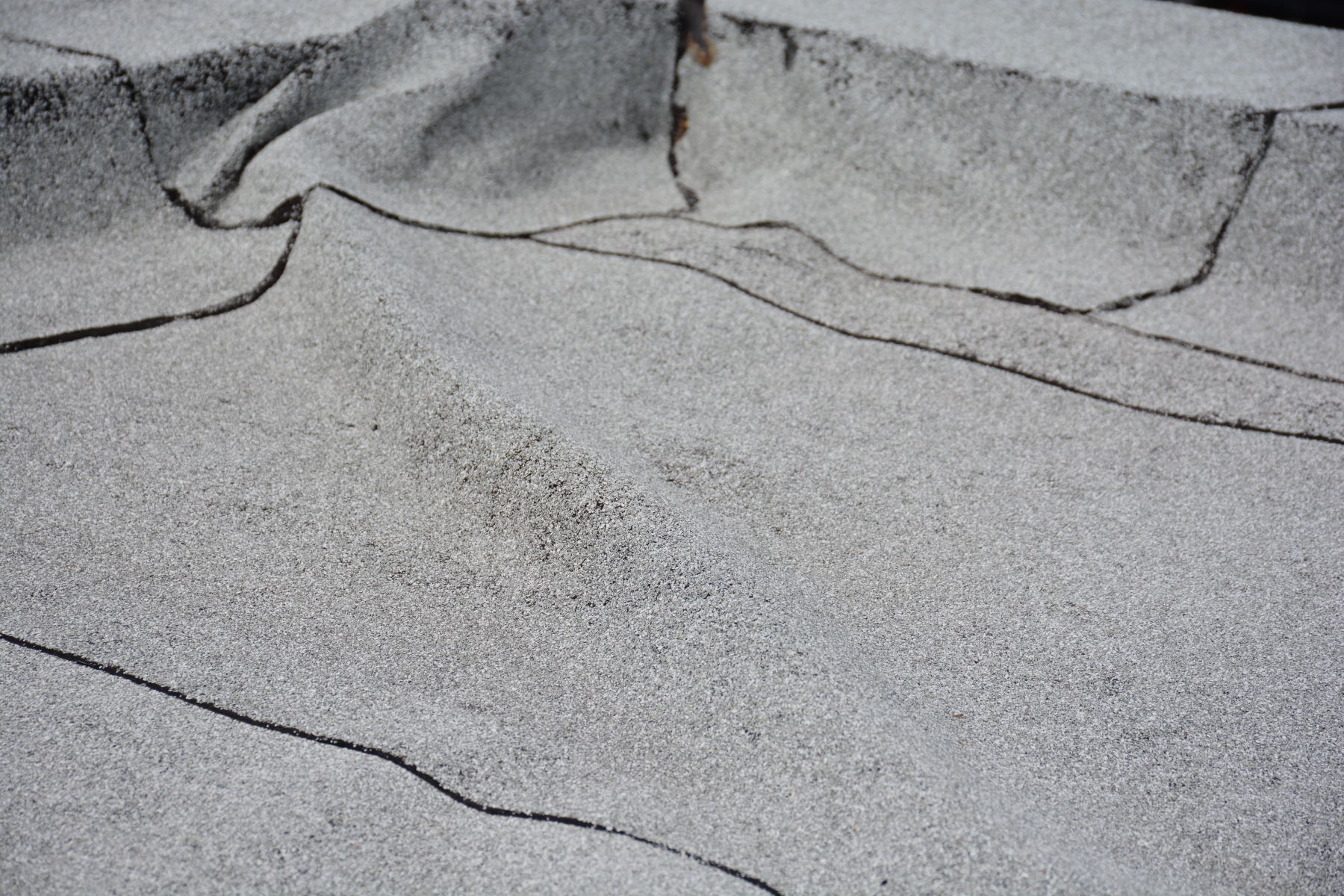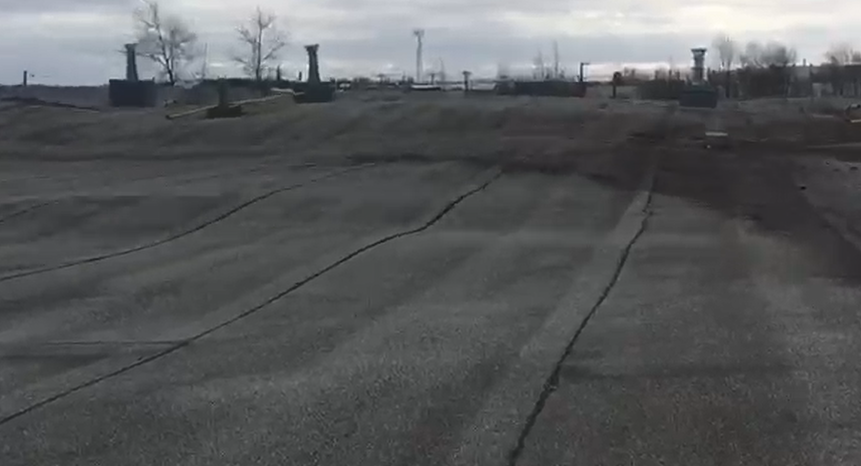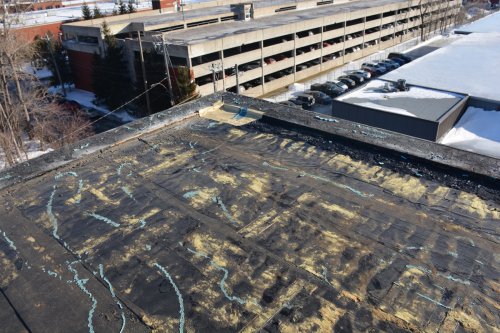LAVAL 1 800 361-0338
Lévis 1 866 835-5335
Roofs damaged by wind
Although the Province of Quebec does not experience tornadoes or hurricanes annually, the fact remains that strong winds appear at certain times of the year, especially during the summer or fall. Roof coverings are therefore susceptible to damage during these periods, and the types of damage are many: membrane folding, partial detachment of the corners and even a complete lifting of the roof. The roof waterproofing system is most probably affected, which can lead to major consequential damage (water infiltration damaging the structure and contents of the building).
However, wind is rarely the actual cause of such damage and represents more of a triggering event. Indeed, the design resistance of roof systems required by the National Building Code is based on the characteristics of the building vulnerability to winds (height and building area, land topography, presence of taller buildings or nearby trees, etc.) and on an average wind recurrence of 50 years. Therefore, such winds should be exceptional and not annual. It is generally rare that wind forces alone are sufficient to cause damage to a properly designed and constructed building. It thus becomes important to know the actual cause of the damage in order to assess the possibility of a potential legal action.

Following a disaster, the engineer’s first step is to assess whether the winds are exceptional or below the National Building Code’s design requirements. The engineer then consults the meteorological data recorded at the stations closest to the disaster and compares them with the requirements. Of course, one cannot exclude the possibility of localized events occurring in the area of the disaster, such as microbursts or tornadoes, whose forces would be greater than the data recorded at the weather stations; however, these phenomena are also investigated and recorded by the meteorological stations.

When the hypothesis of exceptionally strong winds can be ruled out, the engineer thoroughly analyses the roof composition in search of potential design deficiencies (inadequate roof composition for use/location), faulty installations (insufficient anchors, lack of adhesion between materials, etc.) or materials (defects, weaknesses) that do not meet the specifications. Maintenance or deterioration could also be at cause if the roof deterioration was such that the materials were too weakened to resume efforts due to strong winds.
In summary, strong winds are not necessarily the cause of roof damage. Indeed, they can simply be the triggering event by exposing a pre-existing deficiency in the roof covering since its design and construction, or a material deterioration that developed over time. An efficient building inspection following a disaster usually provides a better understanding of the damage and facilitates documentation preparation for a potential legal action if necessary.


